
Baptisia
Enjoy towers of gorgeous blue, purple, yellow, or white flowers every spring with baptisia, commonly called false indigo. This beauty is a tough, reliable native perennial that will bloom year after year for decades in any sunny garden. Baptisia is heat- and drought-resistant and even when not in bloom, the plant’s divided, blue-green leaves add plenty of interest to the garden. Baptisia isn’t fussy about soil type, but the plants are slow-growing, so for the best show, buy the largest ones you can find.
Growing Conditions: Full sun and well-drained soil
Size: Up to 4 feet tall
Zones: 3-9
Buy It: ‘Sparkling Sapphires’ Baptisia, ($17, Bluestone Perennials)

Gas Plant
Although it can sometimes be hard to find at your local garden center, gas plant (Dictamnus alba) is definitely worth the search. A classic cottage garden plant, gas plant produces pretty spikes of pink or white flowers in the late spring and early summer. After the flowers fade, they form star-shape seed heads. The light green leaves give off a lemony fragrance when rubbed or brushed. A slow grower, gas plant will bloom for years if you plant it in full sun and leave it there to do its thing; it hates to be transplanted or divided. Fun fact: Gas plant gets its name from the fact that on hot summer evenings the mature flowers produce a flammable oil that can be lit by a match, resulting in a quick vapor burn.
Growing Conditions: Full sun to part shade and moist, well-drained soil
Size: Up to 3 feet tall
Zones: 3-8
Buy It: Purpureus Gas Plant, ($13, Holland Bulb Farms)

Malva
At first glance, you might think Malva is a member of the hibiscus family. That’s because this easy-care perennial develops masses of pink, open-face hibiscus-like flowers delicately etched with dark purple stripes. Malva, also called common mallow, blooms nonstop from mid-summer to early fall. It can handle almost any soil type, but it doesn’t have a long lifespan and may only last for a few years. However, it self-sows frequently so there’s often new a crop of plants growing near the feet of the faded ones (it can become invasive in some areas, so keep an eye out for runaway plants).
Growing Conditions: Full sun to part shade and moist, well-drained soil
Size: Up to 4 feet tall
Zones: 4-8
Buy It: ‘Zebrina’ Common Mallow, ($7, Joyful Butterfly)

Globe Thistle
If you’ve spent much time trying to rid your landscape of Canadian thistle, you may be a bit wary of planting a perennial with “thistle” in its name. But unlike the weedy invader from the North, globe thistle (Echinops ritro) is a joy to grow. This sun-loving perennial produces showy bright blue or white thistlelike spherical blooms from mid to late summer. The flowers also look beautiful in fresh or dried arrangements. Globe thistle is heat- and drought-resistant but doesn’t transplant well, so plant globe thistle where you want it to grow permanently. The plants may self-sow if you allow the blooms to mature on the plant.
Growing Conditions: Full sun and well-drained soil
Size: Up to 2 feet tall
Zones: 3-8
Buy It: Globe Thistle, ($15, Bluestone Perennials)

Bergenia
When it comes to common names, some perennials just can’t catch a break. Take Bergenia for example. This pretty plant is commonly called “pig squeak” simply because the leaves are said to sound like an outraged swine when you rub them between your fingers. But once you get past the plant’s silly common name, you’ll quickly discover that Bergenia is a tremendously useful groundcover plant in shady spots. Its thick, dark green, heart-shape leaves and spikes of bright pink spring flowers are a welcome treat under tall trees or dense shrubs. In addition, it’s rabbit-, deer-, drought-, and disease-resistant.
Growing Conditions: Part to full shade and moist, well-drained soil
Size: Up to 15 inches tall
Zones: 3-8
Buy It: Winterglow Bergenia, ($15, Bluestone Perennials)

Lily-of-the-Valley
It’s no surprise that spring brides often carry the fragrant, pendulous pink or white flowers of lily-of-the-valley (Convallaria majalis) as they walk down the aisle. This sweet little perennial has come to symbolize humility, purity, and the return of happiness. The plant’s light green leaves pop up in the early spring and are followed by the short, graceful flower stalks just a few weeks later. Use lily-of-the-valley as a groundcover in shady woodland gardens or along the north side of your house. Just be aware that it can spread quickly out of bounds. And keep in mind that the red berries it produces are poisonous, so it’s best to keep it away from small children and pets.
Growing Conditions: Part to full shade and moist, well-drained soil
Size: Up to 8 inches tall
Zones: 3-8
Buy It: Lily-of-the-Valley Plants, ($13, Native Wildflowers Nursery)

Culver’s Root
A North American native, Culver’s root (Veronicastrum virginicum) makes a bold statement in the back of of mixed borders or meadow gardens. Culver’s root produces a nonstop display of white, candelabra-like flower heads throughout the summer. This perennial is also popular with butterflies that feast on its nectar-rich blooms. It’s not bothered by disease or insect pests, but may require staking if it doesn’t receive enough sunlight.
Growing Conditions: Full sun and moist soil
Size: Up to 7 feet tall
Zones: 3-8
Buy It: 1,000 Culver’s Root Seeds, ($3, Etsy)
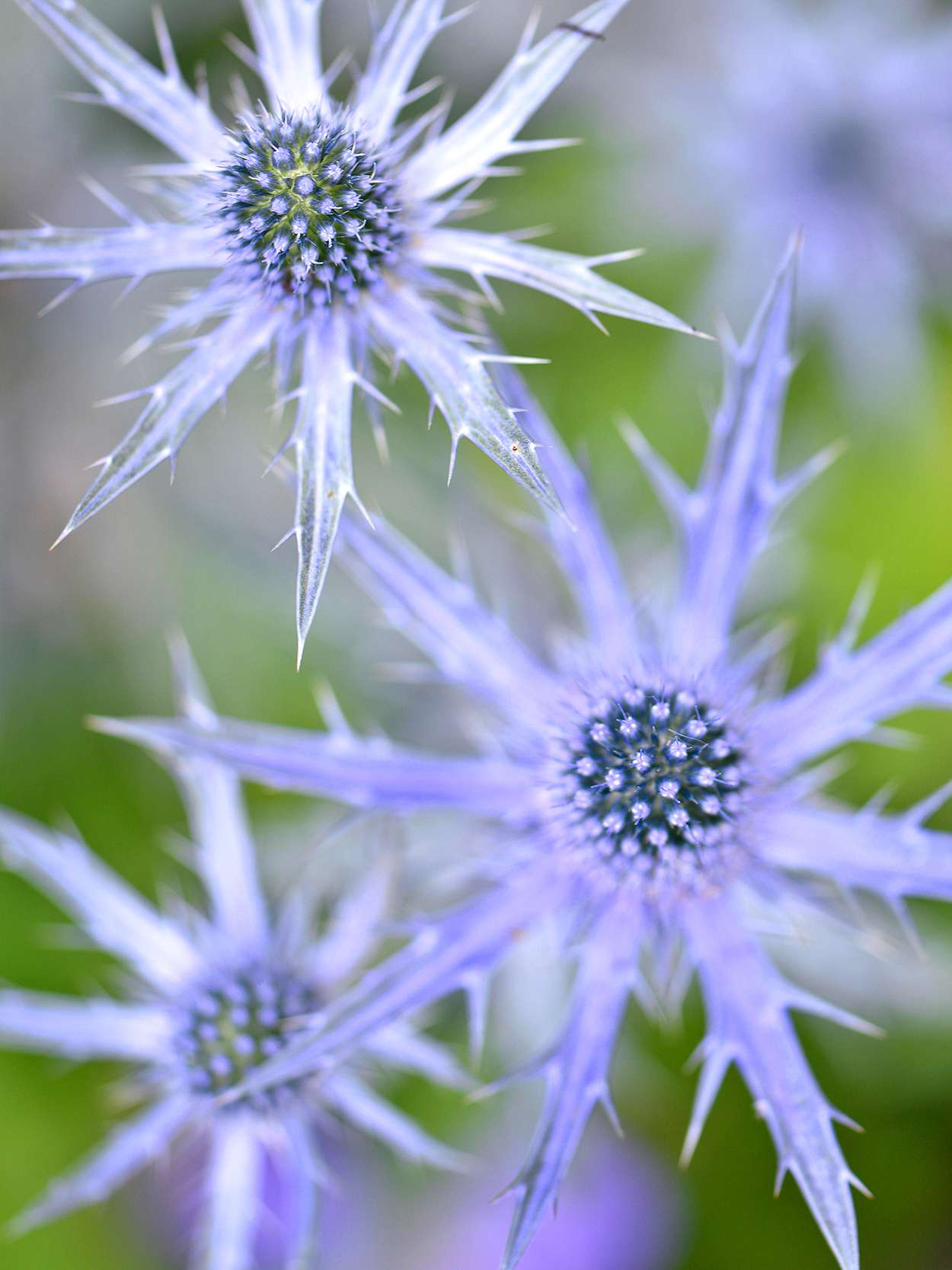
Sea Holly
If you love to create fresh flower arrangements, be sure to plant sea holly, (Eryngium planum) in your garden. A popular cut flower since the Victorian era, sea holly is prized for its stiff steel-blue flowers that hold their color even when dried. The plants produce armloads of thistle-like blooms from June to September. This easy-care perennial is a sun worshipper that actually does best in dry, sandy soils. In fact, if you fertilize or over water sea holly, you might end up killing it with kindness. Sea holly does not transplant well, so avoid moving it once it’s established.
Growing Conditions: Full sun and well-drained soil
Size: Up to 3 feet tall
Zones: 5-9
Buy It: ‘Big Blue’ Sea Holly, ($16, Bluestone Perennials)
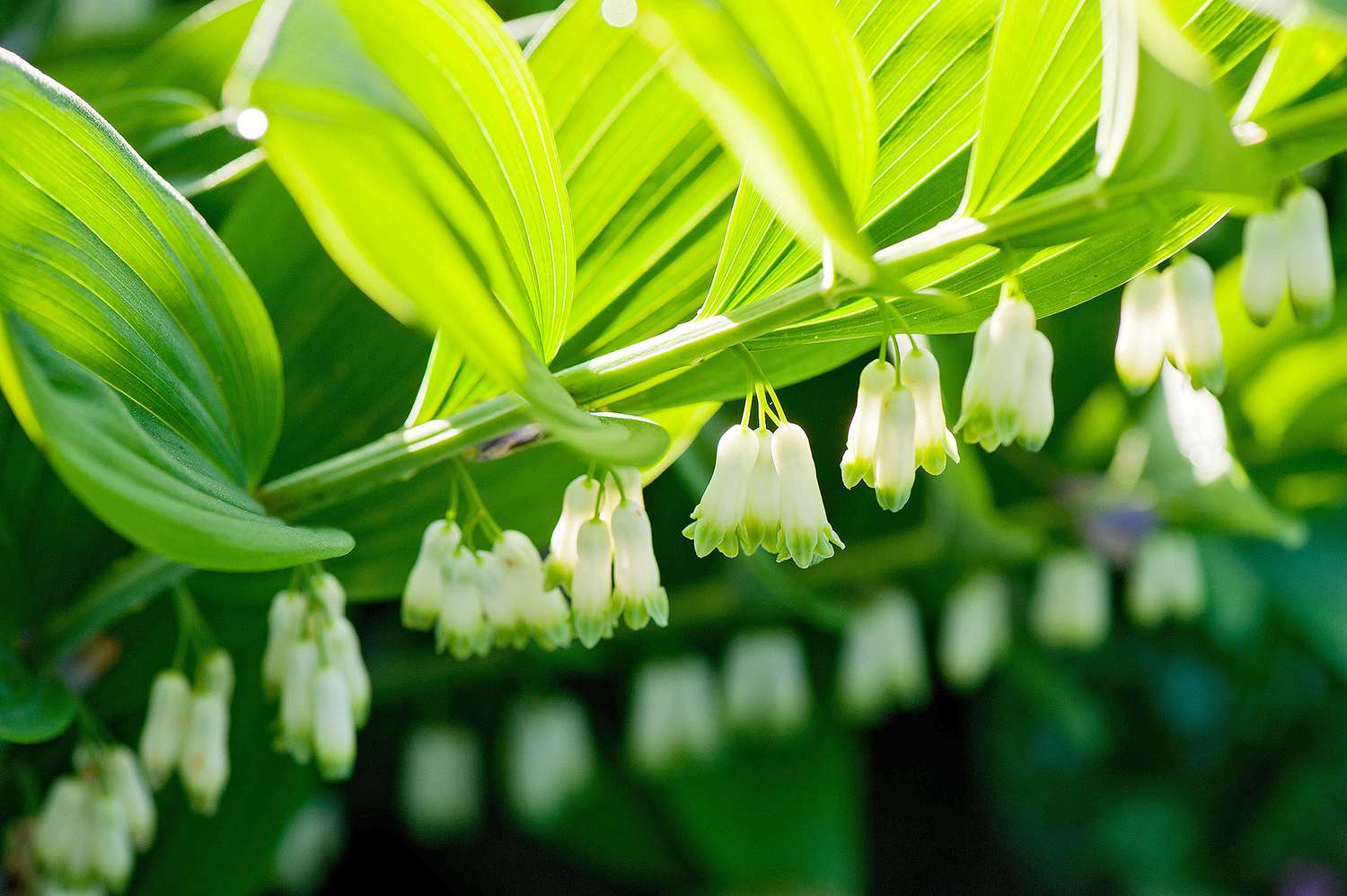
Solomon’s Seal
There aren’t a lot of perennials that thrive in dense shade. But Solomon’s seal (Polygonatum odoratum) is a colorful exception that will quickly light up the darkest corners of your landscape. This pretty plant develops cheerful green or variegated foliage and small, bell-shape white flowers in April and May. Solomon’s seal prefers rich soil and slowly spreads through the garden by underground roots. In the fall, the foliage turns bright yellow, adding an extra boost of color as the growing season comes to an end.
Growing Conditions: Part to full shade and moist, well-drained soil
Size: Up to 3 feet tall
Zones: 3-8
Buy It: Solomon’s Seal Rhizomes, ($5, Etsy)

Queen of the Prairie
Thanks to its size, no one can call queen of the prairie (Filipendula rubra) a shrinking violet. This amazing native perennial is ideal for large gardens or open hillsides where you can give it enough elbowroom to hold court. Once established, queen of the prairie will produce masses of fragrant, pale pink flowerheads throughout the summer. It’s also dressed in large, bright green, finely cut foliage that’s resistant to hungry deer. Queen of the prairie will self-sow and eventually form thick clusters of regal plants.
Growing Conditions: Full sun or part sun and moist, well-drained soil
Size: Up to 8 feet tall
Zones: 3-8
Buy It: Queen of the Prairie, ($15, Breck’s)
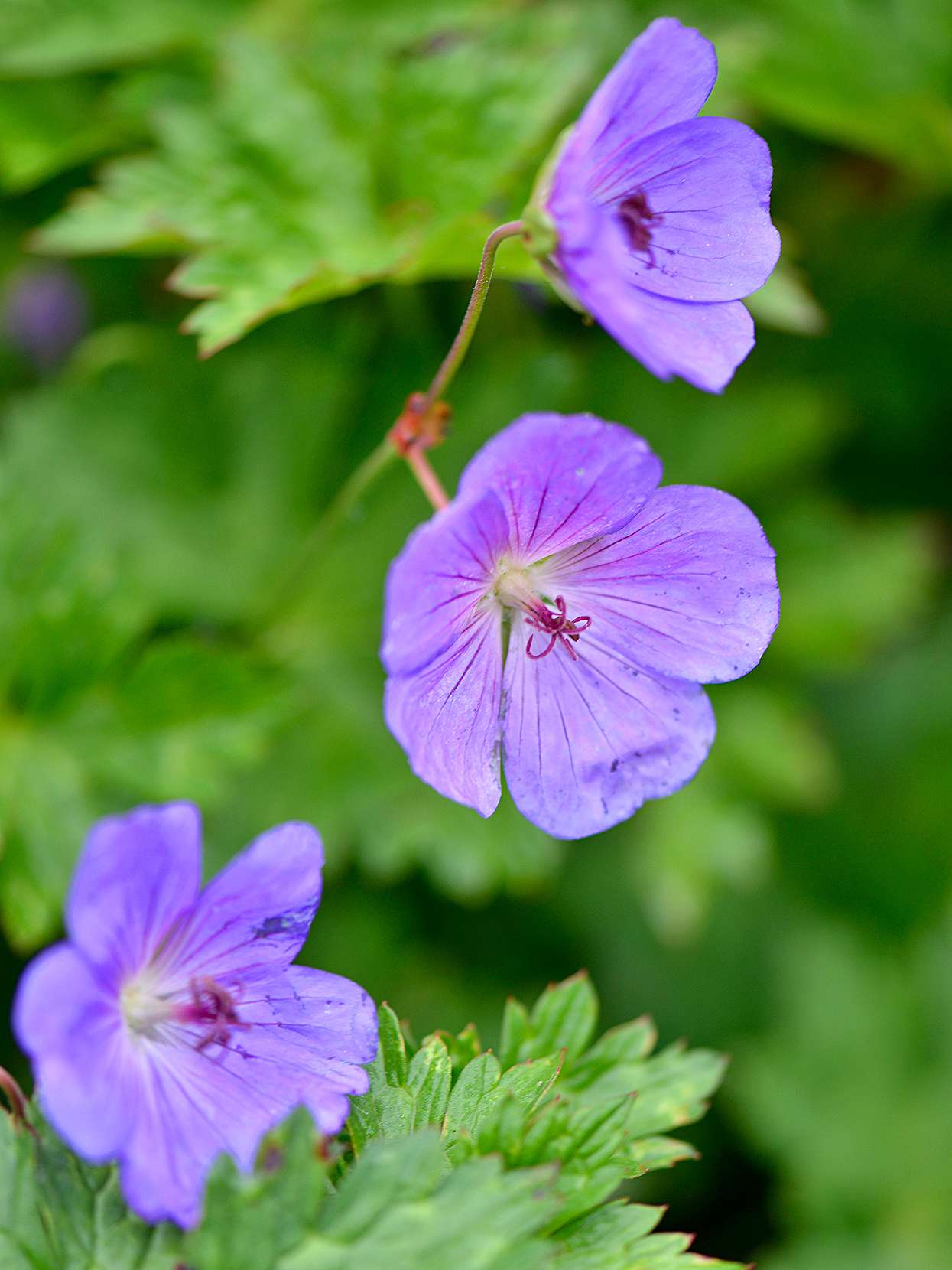
Perennial Geranium
When it comes to flower power, few perennials can compare to perennial geranium. These little beauties put on a big show in the garden because they always seem to be smothered in flowers. Perennial geranium comes in a wide variety of colors, including white, pink, blue, lavender, purple, red, and bicolor, and all varieties have interesting, lobed foliage. After the first flush of bloom, some plants may start to sprawl, but all you need to do is shear them back to encourage more flowers and compact growth. Use perennial geranium in the front of the border, rock garden, or woodland setting.
Growing Conditions: Full sun to part shade and moist, well-drained soil
Size: Up to 2 feet tall
Zones: 4-10
Buy It: ‘Biokovo’ Geranium, ($17, Bluestone Perennials)
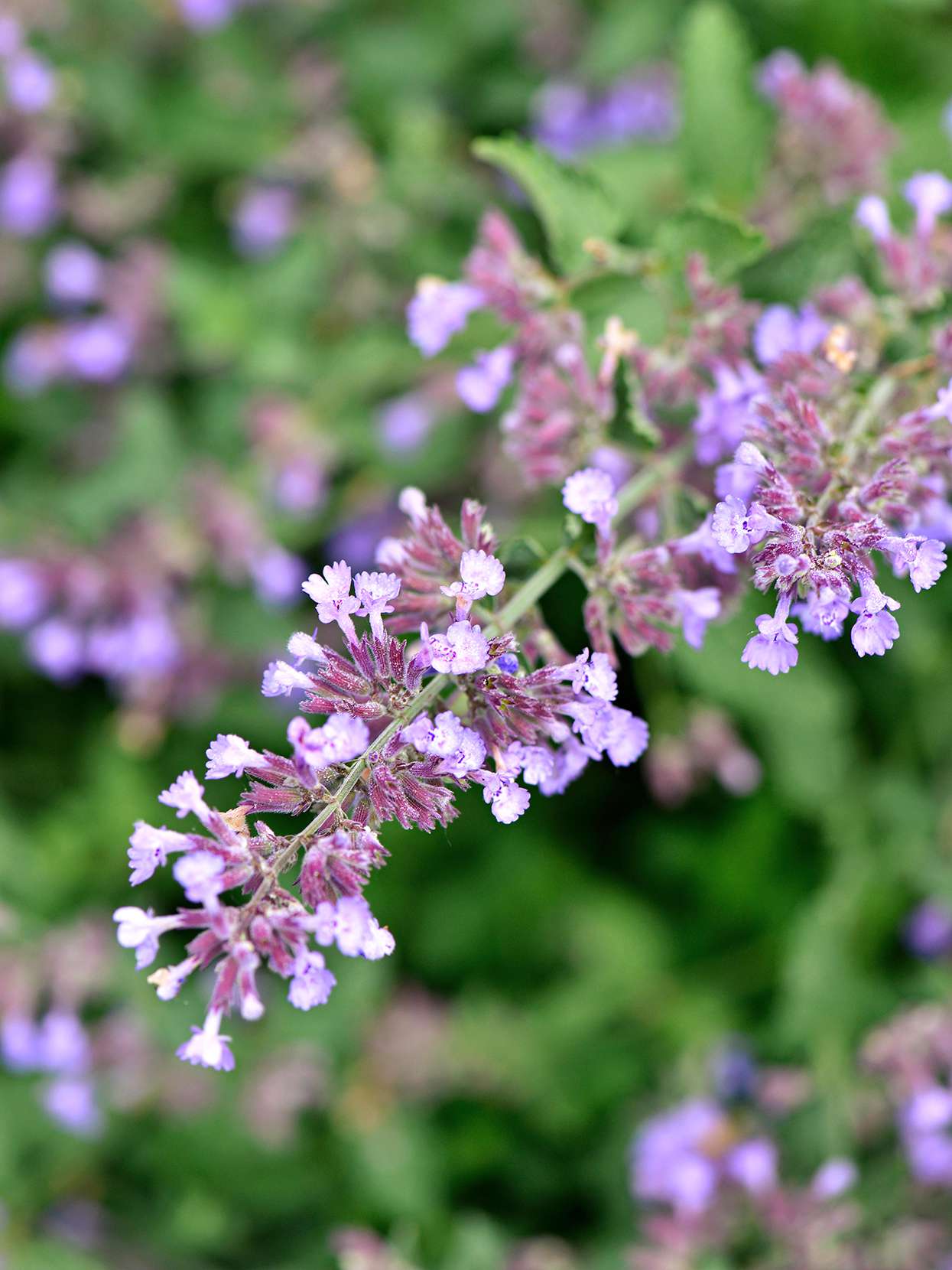
Catmint
We probably get more compliments about catmint than any other perennial in our Test Garden. Planted in masses along a border edge, this little powerhouse never fails to produce a showstopping display of bright bluish-purple flowers. It’s extra hardy with few insect or disease problems and comes in a variety of sizes that range from 6 to 36 inches tall. The plants bloom in late spring and early summer and can easily be encouraged to bloom again if you shear the plants back by two thirds after the first flowers fade. Catmint is a popular nectar plant and will lure hummingbirds and butterflies to your garden. Rabbits and deer tend to leave catmint alone, perhaps because of its aromatic leaves.
Growing Conditions: Full sun to part shade and moist, well-drained soil
Size: Up to 3 feet tall
Zones: 3-8
Buy It: ‘Select Blue’ Catmint, ($10, High Country Gardens)
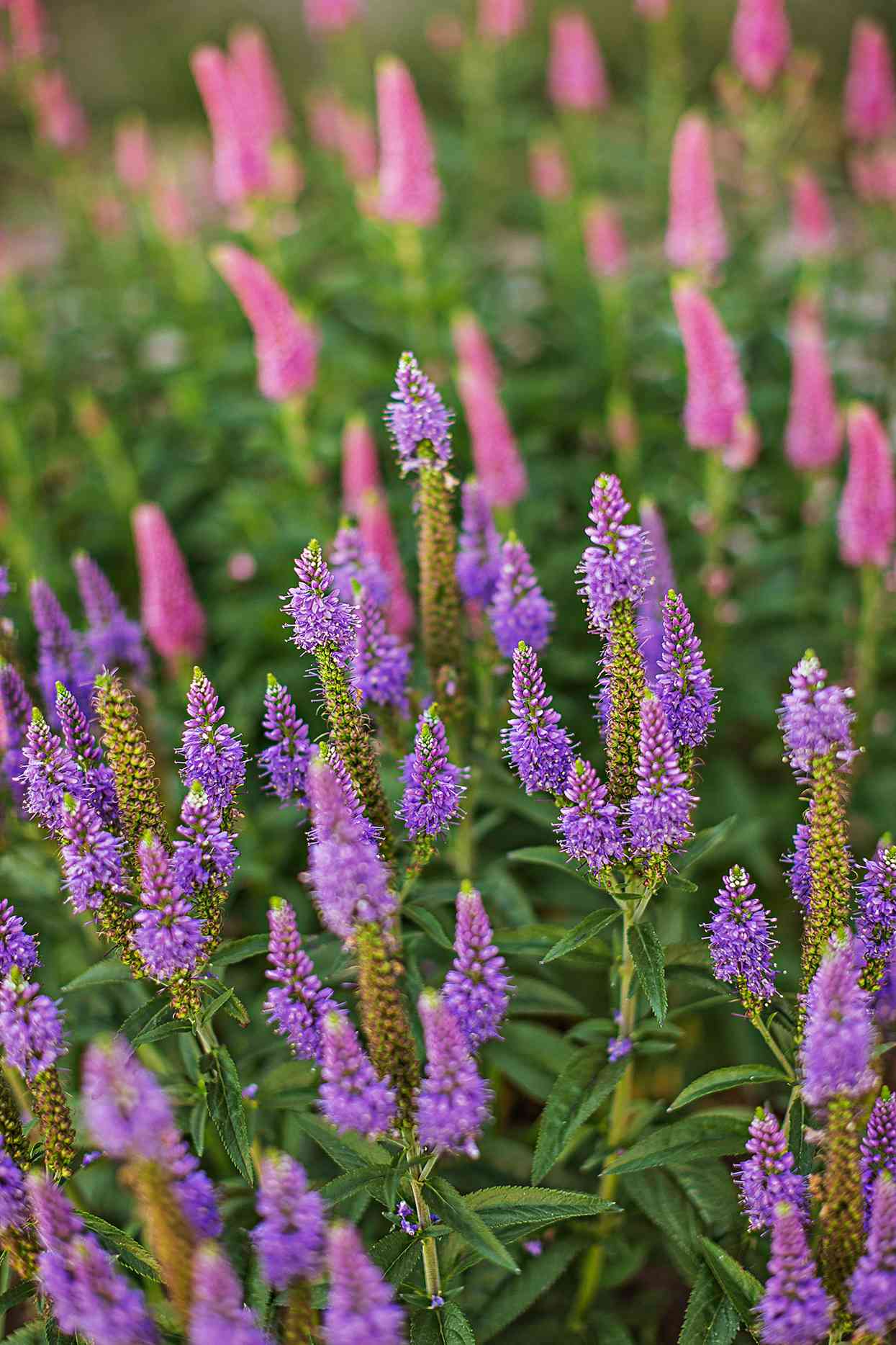
Veronica
Once found in every perennial border, veronica isn’t always the first plant you see when you visit the garden center. That’s probably because the plants don’t look all that showy when they’re young. Yet, veronica remains one of the easiest and prettiest perennials you can grow. These reliable plants develop sturdy spikes of blue, purple, red, or white flowers that keep coming all summer long if you remember to clip away the dead flowers as they fade. Veronica makes a great cut flower, too. And to top it all off, deer and rabbits won’t mow your plants to the ground.
Growing Conditions: Full sun and well-drained soil
Size: Up to 2 feet tall
Zones: 4-9
Buy It: ‘Tidal Pool’ Veronica, ($17, Bluestone Perennials)

Turtlehead
Late summer can be a drab time in the perennial border unless you include plants that put on their best show at the end of the season. Turtlehead (Chelone obliqua), for example, produces attractive snapdragon-like, rose-purple, pink, or white flowers from July to September. This native perennial thrives in rich, moist, almost swampy soil. Turtlehead is the perfect choice for bog or rain gardens or alongside koi ponds and waterfalls.
Growing Conditions: Full sun to part shade and moist soil
Size: Up to 3 feet tall
Zones: 3-9
Buy It: Turtlehead Plants, ($7, Joyful Butterfly)

Epimedium
Some perennials are natural problem-solvers. Epimedium, for example, is one of the best groundcovers for dry shade. This makes it invaluable for use under tall, shallow-rooted trees such as maples that suck a lot of moisture from the soil. Epimedium, also called barrenwort or bishop’s hat, develops pretty heart-shape leaves topped with clusters of starry yellow, white, lavender, or rose flowers in April and May. The plants are resistant to deer and rabbits and have virtually no disease or insect problems.
Growing Conditions: Part to full shade and well-drained soil
Size: Up to 12 inches tall
Zones: 5-9
Buy It: ‘Domino’ Epimedium, ($20, NH Hostas & Companion Plants)
By BH&G Garden Editors
